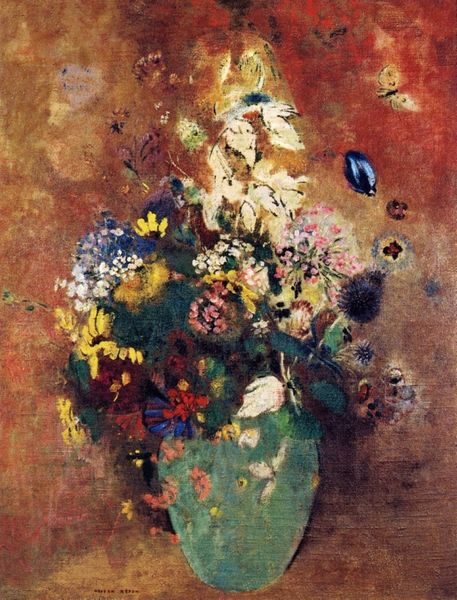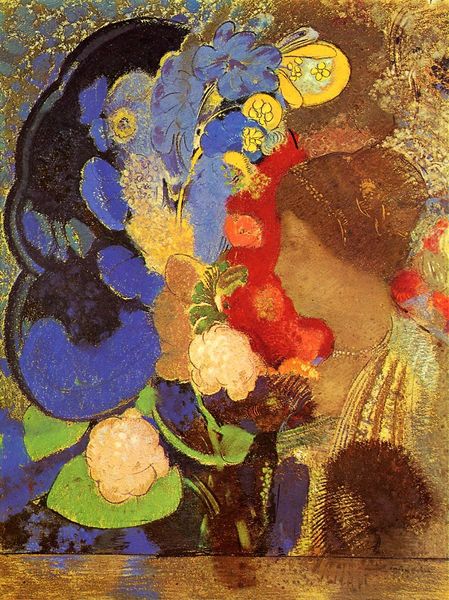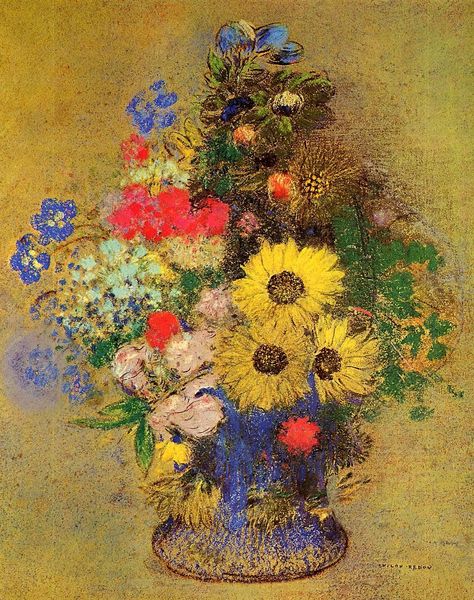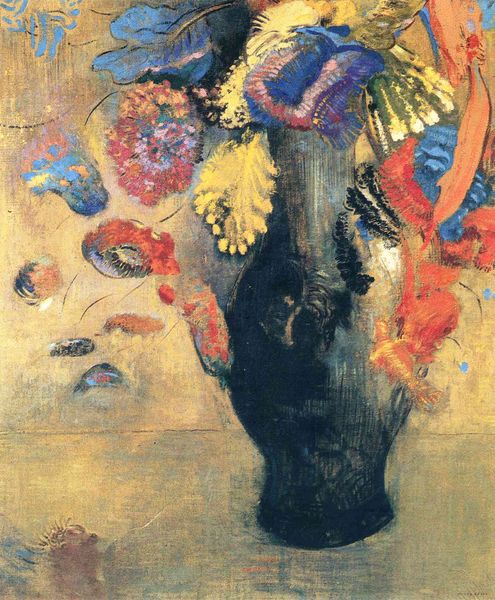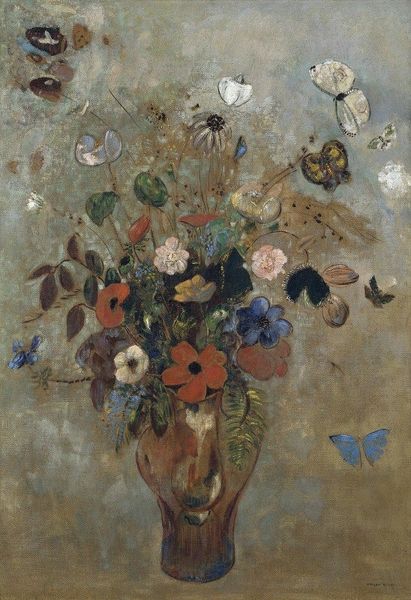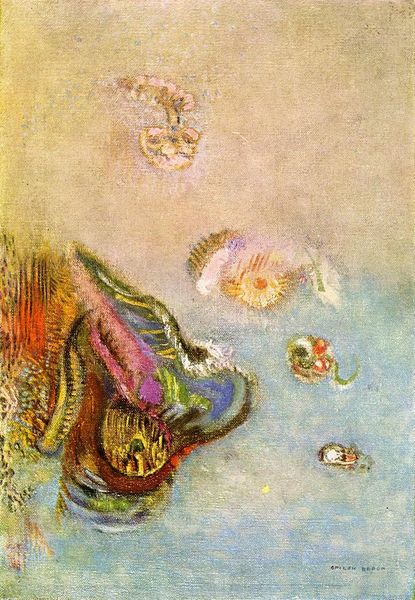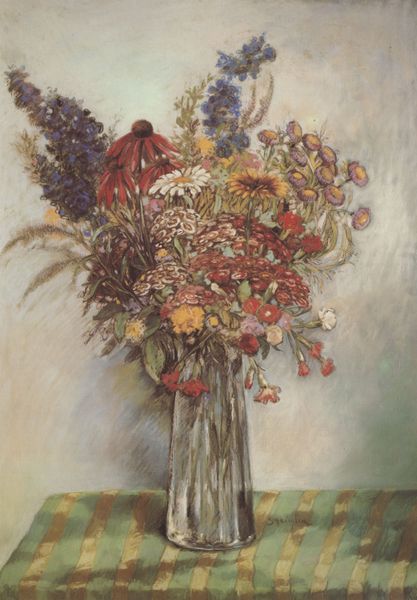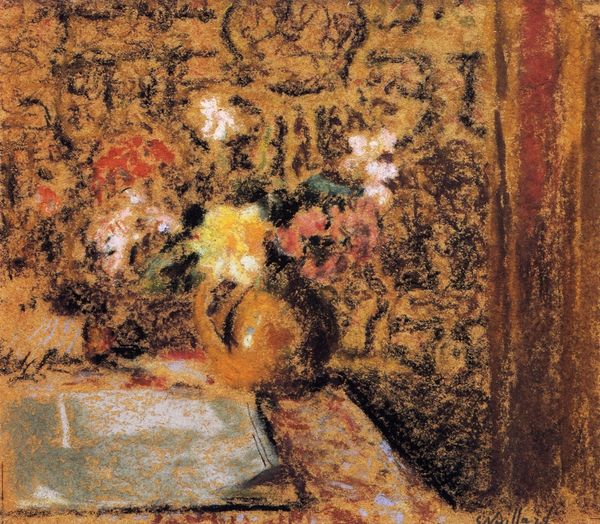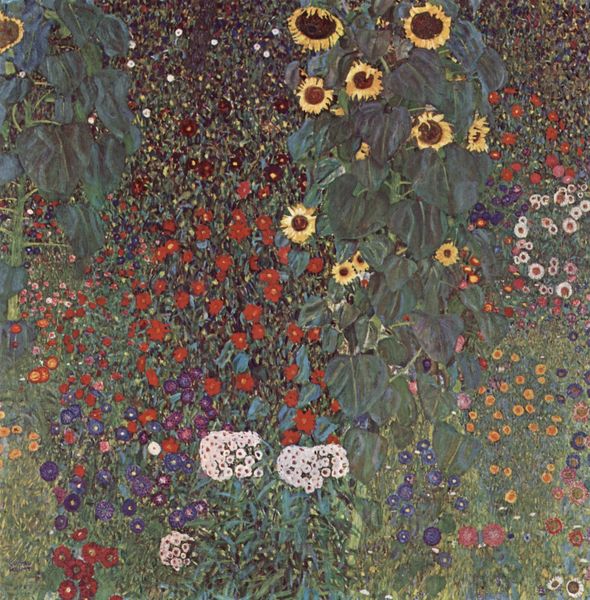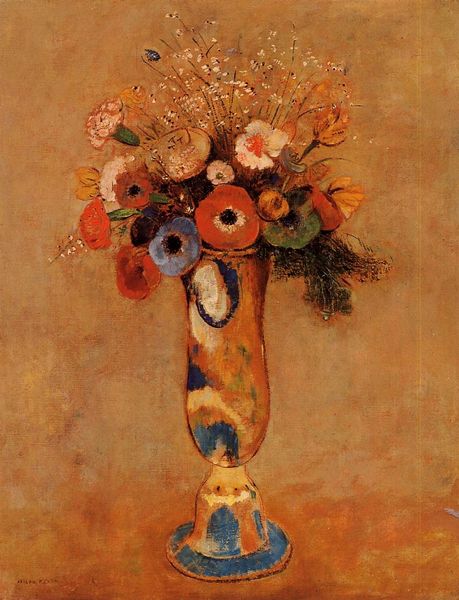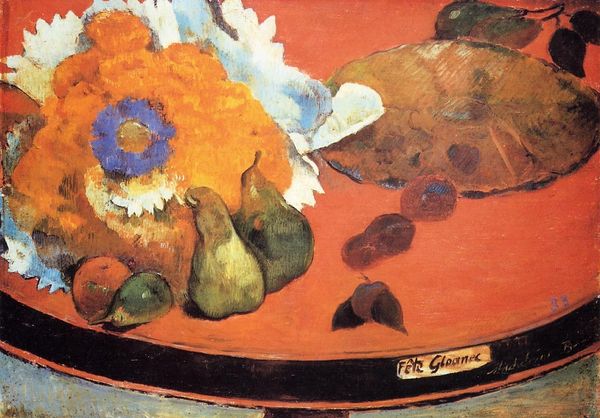
photography
#
still-life
#
gouache
#
flower
#
photography
#
handmade artwork painting
#
fluid art
#
coloured pencil
#
plant
#
naive art
#
watercolour bleed
#
watercolour illustration
#
mixed media
#
watercolor
#
watercolur painting
Dimensions: 27.31 x 21.59 cm
Copyright: Public domain
Curator: This is Odilon Redon's "Flowers in Green Vase with Handles," created in 1905. Redon, as many know, often grappled with themes of isolation and the subconscious. Editor: My immediate impression is one of contained chaos. The vibrant colors of the blooms strain against the rather muddy, undefined background and the very simple vase that constrains them. It's a fascinating juxtaposition. Curator: I find that tension compelling, too. Redon, working in the shadow of institutionalized academic art, positions this bouquet as a subversive gesture. Bouquets in art have a long association with representing status and luxury, but Redon offers something far less polished and palatable here, resisting bourgeois comfort. Editor: Yes, and I'm struck by the vase itself. Its crude shape, with its simplistic geometry, anchors the ethereal nature of the flowers, grounding the composition but without refinement. It calls into question any mere symbolic reading. We are encouraged, I think, to really perceive the interplay between forms and their inherent properties. Curator: Considering Redon's own position as an outsider navigating established Parisian art circles, this speaks volumes about his complex relationship to tradition, particularly concerning class structures and the art world establishment. The choice to depict a commonplace vase subverts the expectation of the elegant containers one usually sees, echoing his distance from established academic circles. Editor: Absolutely. Even the application of what I assume is gouache lends to this quality of deliberate naivety. Note also the artist's mark; a confident inclusion but easily overlooked, quietly assured despite being tucked away in the visual field. Curator: Precisely! The "unfinished" nature is also critical; the suggestion that this artwork has resisted the march of conventional social constructs opens exciting interpretative spaces. Editor: Seeing this interplay helps reveal how Redon utilizes tension, the dissonance between what's depicted and how it's depicted, and allows viewers space to engage and ask how their perspectives might shape meaning. Curator: I agree. Looking at this piece through an intersectional lens deepens our comprehension not only of Redon, but also his relationship to broader narratives within art history, class, and beyond. Editor: A brief immersion that sparks longer and, perhaps, equally fruitful deliberations.
Comments
No comments
Be the first to comment and join the conversation on the ultimate creative platform.

